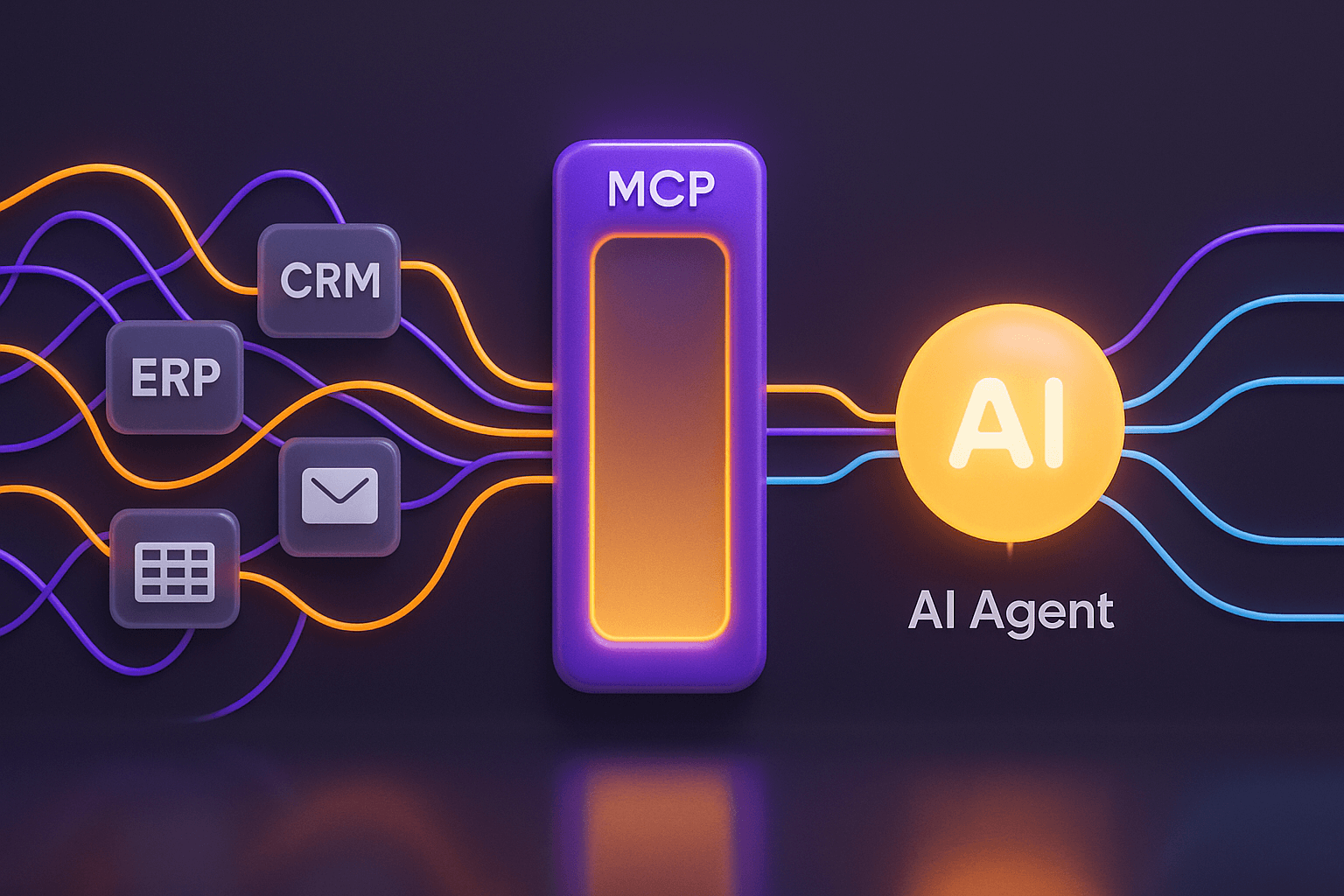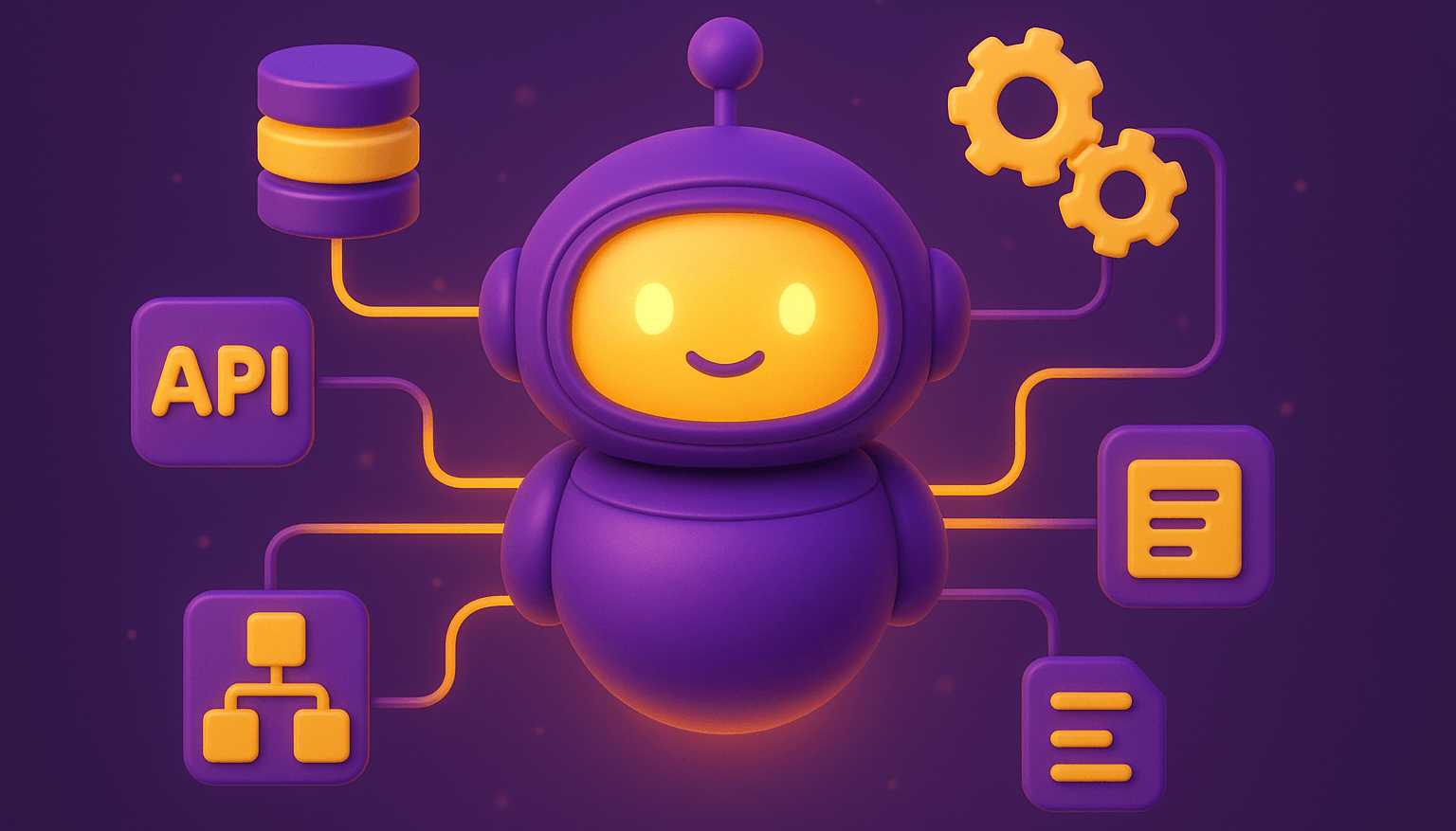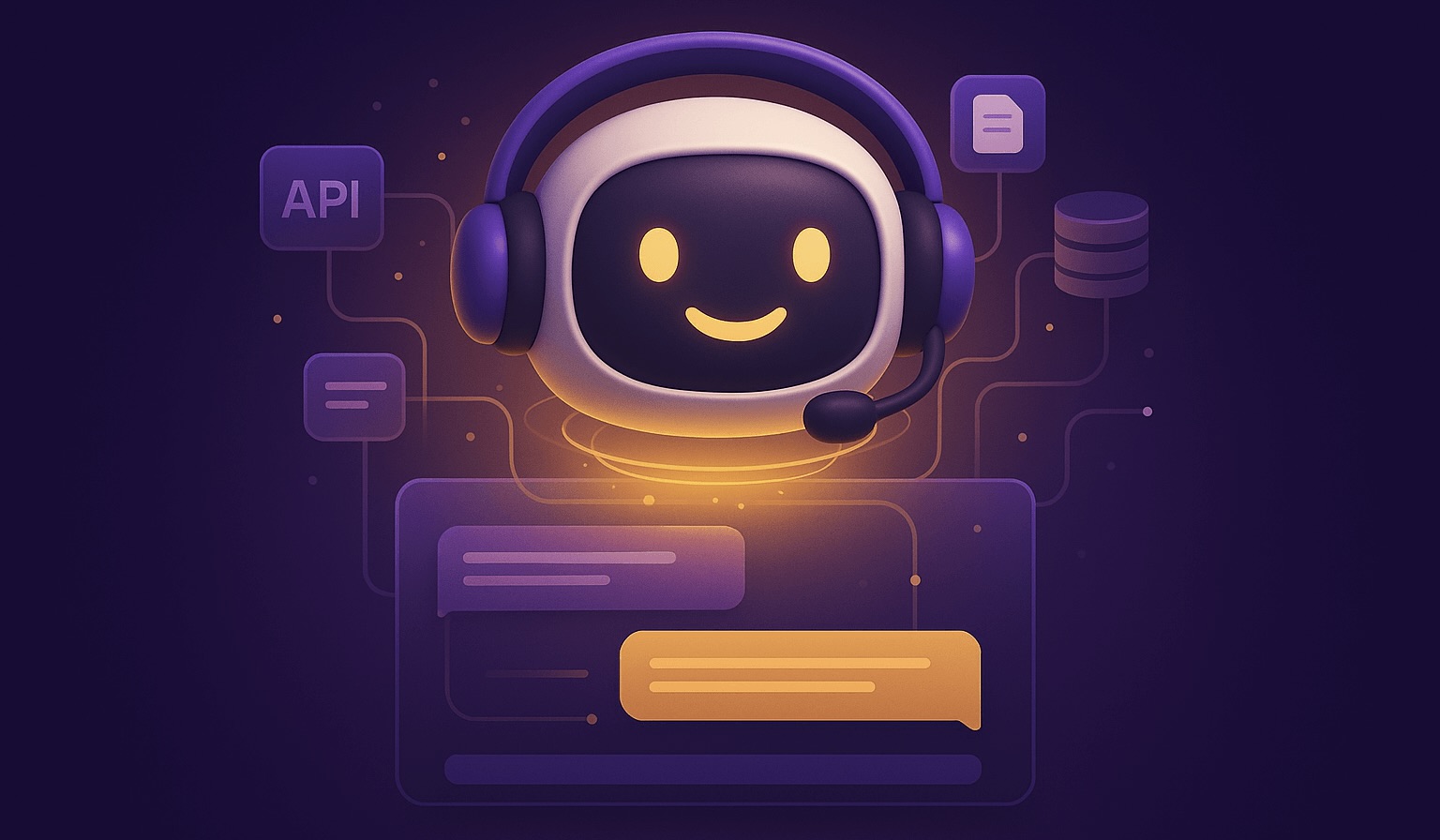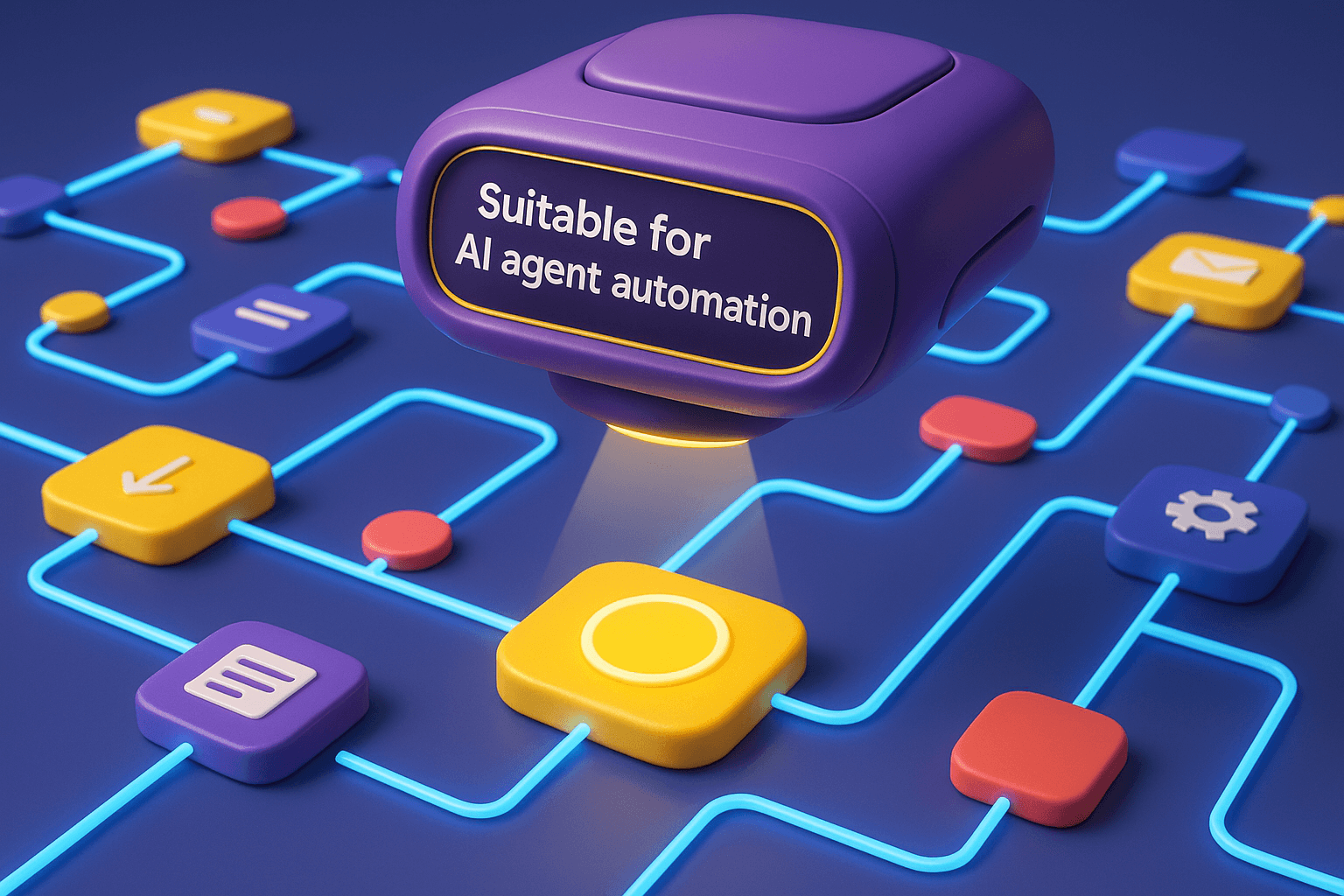Today, it’s no longer enough for an AI chatbot to simply answer pre-defined questions. Users expect up-to-date information and real access to company data. This is why MCP servers play a key role in the evolution of AI chatbots. It’s not about hardware performance, but about a new standard — the Model Context Protocol (MCP) — which allows chatbots to safely connect with internal systems and tools such as CRM, calendars, databases, or ERP. With this technology, chatbots can work with live data, call services in real time, and become true virtual assistants that save companies time and streamline communication.
Introduction to AI chatbot evolution
AI chatbots have become an everyday part of business operations, but it’s becoming clear that conversation alone is not enough. Companies need digital assistants that don’t just reply but actually perform tasks. This is where AI agents come in. An AI agent understands goals, keeps context, plans steps, and executes real actions. The goal is to turn routine work into automated, reliable, and measurable processes.
The difference between a chatbot and an AI agent is critical. A chatbot replies, but an AI agent completes the task. For that, it needs a safe and unified way to communicate with company tools. It needs to see data, respect permissions, and act without manual input. The Model Context Protocol — MCP — provides exactly that bridge between artificial intelligence and your business systems.
For business owners, this means moving from nice conversations to measurable productivity. An AI agent can generate reports, update CRM records, verify order status, or create a ticket — all according to the rules you define. The result is less manual work, fewer errors, and more time for customers. MCP ensures all of this happens securely and transparently.
Another benefit is scalability. Once you define the first set of functions through the MCP server, they can be reused across other processes and AI agents. You don’t have to build the same integrations over and over. Costs and deployment time drop, while flexibility grows. Adding a new business tool no longer means rewriting your agent’s behavior.
Why companies need a smarter approach to AI
Most companies still use AI in its simplest form. A chatbot answers a question and sends a link. In terms of efficiency, that’s only the first step. Real value comes when the AI agent takes over repetitive tasks and completes them independently. That requires access to data and the ability to act inside business rules. Without that, AI remains limited to conversation and never reaches its full potential.
Data lives everywhere — in CRM, ERP, e-commerce platforms, helpdesks, and spreadsheets. Employees jump between tools and enter the same data multiple times. An AI agent connected through an MCP server can do it all automatically and consistently. That’s why demand for intelligent integration is growing. Business owners want less manual work and more measurable outcomes.
A smarter approach means shifting from responses to actions. An AI agent gets clearly defined competencies that it can perform safely. It stops being a decorative add-on and becomes a true digital coworker who supports the team and delivers faster customer service.
What MCP is and why it matters for AI agents
The Model Context Protocol is a standard that gives AI agents the ability to communicate with external tools and data sources. The MCP server offers a catalog of functions the agent can use. Each function has defined parameters and expected outputs. The agent knows what it can execute, what data it needs to provide, and how to interpret the result. This keeps the AI’s work predictable, auditable, and aligned with company policy.
For companies, this means that AI agents are no longer a security risk. They don’t have unrestricted database access — they communicate exclusively through the MCP gateway. Every request is logged and managed. When you want to add a new capability, you simply register it in the MCP server, configure permissions, and the agent can start using it immediately.
The key is context. The agent doesn’t call functions at random. It understands the goal, selects appropriate steps, evaluates outcomes, and adjusts its plan. That’s the difference between conversation and real work. MCP ensures this process happens safely, repeatably, and measurably.
How MCP transforms everyday business processes
An AI agent connected through MCP can handle tasks that used to take several employees. It can cancel an order on a customer’s request, add a note to the CRM, create a helpdesk ticket, and send a confirmation email — all in one smooth conversation. Instead of redirecting the user, the issue gets resolved instantly.
The same logic works in the back office. A manager asks for last week’s summary, the agent gathers data from multiple systems, filters anomalies, and prepares a report. Based on MCP rules, it can even take the next step — notify a salesperson, create a task, or send an internal alert. Everything is traceable, every step transparent.
In e-commerce, AI agents help maintain data consistency. Inventory levels, shipping updates, and invoices often fall out of sync. MCP gives the agent the ability to coordinate these steps and minimize manual corrections. The customer receives accurate information, and the team avoids repetitive updates.
How MCP enables real-time and large-scale AI operations
Real-time performance and scalability are what separate ordinary chatbots from AI agents powered by MCP. A regular chatbot waits for questions and replies. An AI agent plans, executes, and returns results while maintaining context across multiple systems. This requires a strong infrastructure. MCP servers handle high-volume parallel requests while keeping processes consistent.
During peak seasons, MCP can be scaled horizontally. Additional capacity can be added without breaking workflows. Agents continue to operate with the same reliability. Users see fast responses, and KPIs stay stable. For business owners, this means the automation continues to perform even when demand spikes.
Adding new functions is also straightforward. Each one is published in the MCP server as a defined action. The agent can start using it immediately. This allows companies to deploy new processes quickly and keep up with business growth.
Security aspects of MCP servers for AI applications
Security is at the core of any serious AI deployment. MCP separates the model from systems and exposes only what’s necessary. Permissions are fine-grained and fully auditable. Every function call is logged with its parameters and results. In case of an incident, the entire sequence can be reviewed. This gives both IT and management confidence in how AI operates.
All communication is encrypted, and secrets such as keys or tokens are stored in a secure vault. The AI never accesses them directly. MCP attaches the right credentials at runtime. In practice, this means the agent never acts outside its role. Error handling is also built in. If a tool returns an error, the agent can retry, escalate, or stop safely without disrupting the workflow.
This approach reduces operational risk and increases trust. IT teams maintain control, management has visibility, and data protection requirements are met. Without this type of design, AI would never be allowed near critical business processes.
AI agents as digital coworkers
AI agents are not just website features. They are digital coworkers with defined roles and competencies. They can serve customers, prepare documents, manage data, and track deadlines. They work consistently and follow rules. Employees can then focus on strategic work that needs human judgment, while the agent handles the repetitive parts.
Another strength is that the agent learns through work. Once it masters one process, you can add another. In MCP, you simply assign new functions and permissions. There’s no need for full re-implementation. This shortens deployment time and increases ROI.
Culturally, it’s a shift toward collaboration between people and AI. Each does what they do best. Humans decide and create, AI ensures the process runs smoothly. MCP keeps everything organized and ensures that boundaries are respected.
How MCP accelerates business digitalization
Digital transformation often gets stuck on integrations. Each tool has a different API, format, and limitation. MCP simplifies this by creating a unified layer that AI agents understand. Adding a new system no longer means rewriting the agent. You describe its functions in MCP, and the agent immediately knows how to use them.
This makes automation accessible even to smaller companies that could not afford custom integrations before. There’s no need to build one-off connections for every tool. MCP handles the language, logic, and oversight. The result is faster deployment, lower IT load, and better ROI.
From a business perspective, it also reduces dependency on a single platform. If you ever replace one of your tools, you only need to update MCP definitions, and your agents continue working. This minimizes technical debt and keeps your company agile.
Real business benefits of MCP for company owners
Companies that already use AI agents powered by MCP report less repetitive work, faster response times, and cleaner data. Customers get accurate answers, and issues are resolved on the first contact. Employees spend less time copying information, and error rates drop. Managers gain access to real-time insights and can make decisions based on data, not assumptions.
The financial impact comes quickly. Time savings translate into higher capacity without adding headcount. Automation runs continuously and maintains consistent quality. This improves both profit margins and customer satisfaction. Because MCP is manageable and secure, it fits even in heavily regulated industries where compliance is non-negotiable.
The best way to start is with the most repetitive processes — customer service, order management, or invoicing. Once the process proves stable, extend it to new areas. MCP allows you to scale automation without rewriting the foundation.
Why now is the right time to start with MCP
AI technology has matured to the point where it can be used reliably in daily operations. MCP is becoming the common standard for connecting AI agents with real business tools. Companies that start now gain an early advantage. Their agents learn internal processes, build experience, and are ready to scale when demand increases.
Getting started is simple and safe. Choose one process, describe its functions in MCP, set permissions, and launch a pilot. Measure metrics and iterate. Once you see the benefit, expand. This approach works for both small and large organizations with different IT complexity.
Delaying adoption carries hidden costs in manual labor and inefficiency. Deploying AI agents with MCP reduces those costs and frees up your team for customers and innovation. It’s an investment that pays off in both speed and quality.
The future of MCP and AI in business
The future belongs to networks of cooperating agents. Each one has a role and access to specific tools. Their collaboration will be powered by standards like MCP. A support agent will request data from a logistics agent, which will query inventory and accounting. The customer experiences a seamless process, while the company maintains full control and transparency.
This model is flexible and resilient. Changing one tool only requires updating its MCP definitions. Adding new services means defining new functions and permissions. For business owners, this is a practical way to keep up with market change while staying efficient.
Cross-company collaboration will also expand. Suppliers and distributors will exchange data through agents. Orders, confirmations, and payments will move smoothly and securely. MCP will ensure that only the necessary data is shared and that every transaction is traceable.
Conclusion and recommendations for developers
MCP servers give AI agents the power to perform real work, while giving companies control over how it’s done. Automation gains structure, visibility, and safety. Customers receive faster service, and employees get relief from repetitive tasks. From a business standpoint, it’s a path to higher efficiency without hiring more people.
For developers, the steps are clear. Map out a repetitive process, define essential functions in MCP, set access rights, and launch a pilot. Track time saved, error reduction, and response speed. Once results are clear, extend the agent’s scope. That’s how AI becomes part of daily operations rather than just a web experiment.
The technology is ready, the market is ready, and your team will be ready once it gets a tool that gives AI clear rules and a secure environment. That tool is MCP, and the player that turns conversation into real action is the AI agent.




